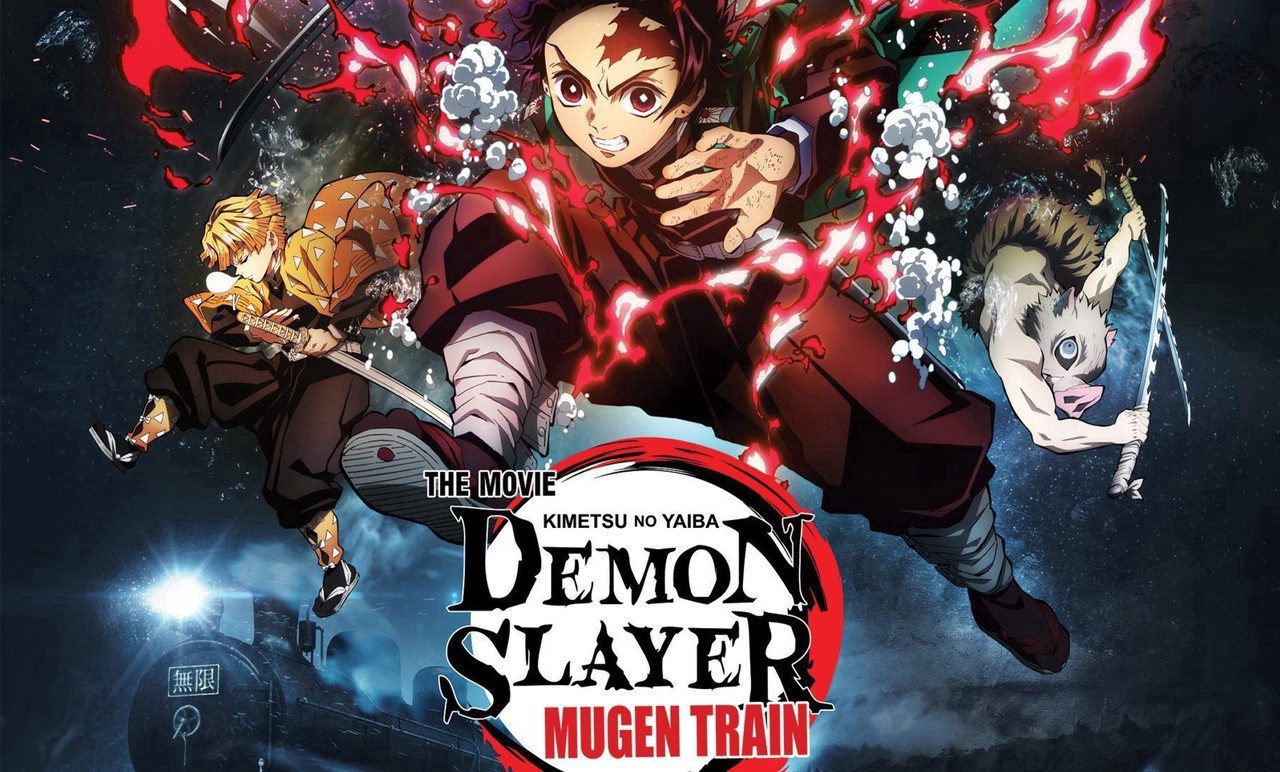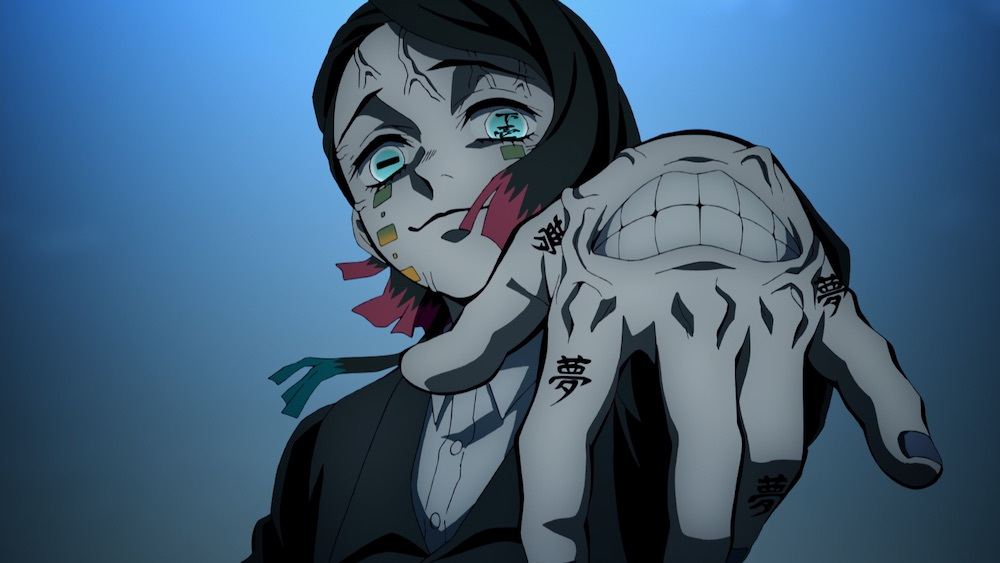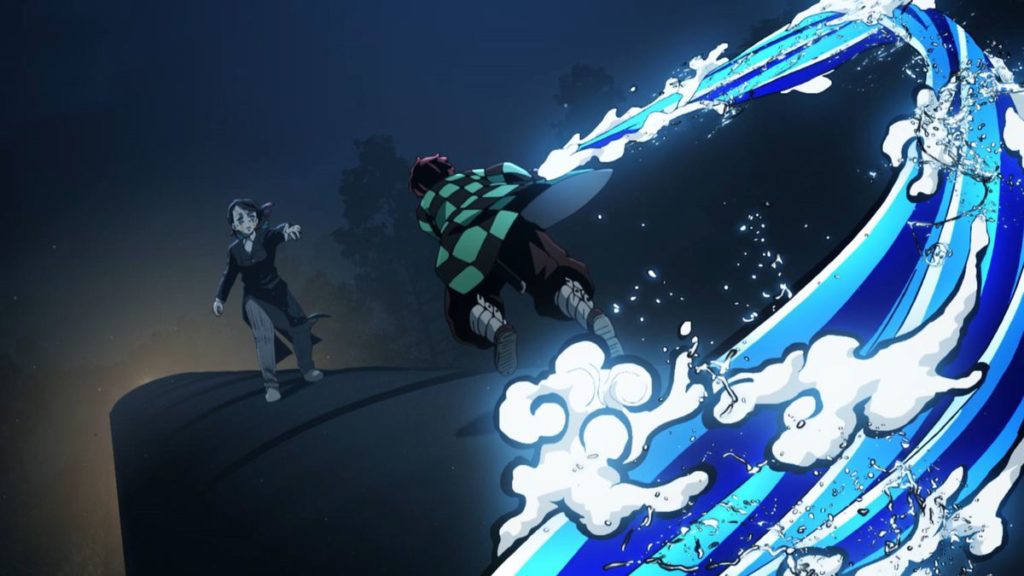
It’s not hard to see why Demon Slayer: Kimetsu No Yaiba has catapulted to the heights of battle shonen stardom in such a short time. After years of running in Shonen Jump magazine, the lauded animation studio Ufotable picked up the adaptation for the manga. At first glance, this story fits nicely into a contemporary media landscape obsessed with grim ruminations and re-evaluations of previously beloved tropes. Although it sticks to many genre archetypes, Demon Slayer begins with a bloody tragedy that undercuts the sense of buoyant adventuring that frequently defines these types of teen-targeted romps. But, ironically, beneath these dire pretences of gore and viscera lies a sentiment of overflowing kindness. Many were drawn in by the apparent edge, but much of this series’ appeal lies in its protagonists’ boundless empathy.
Demon Slayer: Kimetsu No Yaiba: Mugen Train is a film that picks up where the steadily improving first season of the show left off, building on this upward kinetic momentum and capitalizing on our connections with these characters to hit with the force of its titular locomotive. Blood-boiling duels pair with crescendos of heartrending melodrama to deliver some of the series’ most euphoric moments yet. While translating an episodic manga into a feature-length film results in a few pacing issues throughout, the flashy moments of all-out sakuga more than justify Ufotable’s choice to deliver this arc on the silver screen. Animation nerds will rejoice at the spectacle.
The film begins as Tanjiro and his compatriots Zenitsu and Inosuke embark on their previously assigned mission from the Demon Slayer Corps. They are to investigate a slew of mysterious murders that claimed the lives of their comrades, all of which took place on an overnight train. While our trio is accompanied by Rengoku, an elite swordsman who brandishes a flaming blade, they soon realize that their foe is more dangerous than they envisioned. Enmu, a recently empowered demon, has taken residence on the Mugen Train, lulling passengers into a deep sleep before feasting on their blood. Before long, our protagonists have been trapped in their own dreams, recollecting bittersweet memories of the past. Or, in Zenitsu and Inosuke’s cases, partaking in ill-considered comic misadventures.

These dream sequences are a concise shorthand for everything that is moving and occasionally frustrating about the series. Some of these dreams offer visions of nostalgia and tragedy, returning our characters to their pasts. At one point, we are whisked back to this narrative’s inciting incident and must reckon with the depth of our protagonist’s personal loss. In the case of Rengoku, a character who is somewhat new to the narrative, we get a tender portrayal of his motivations and struggles with his family. These scenes embody this tale’s empathetic heart and ensure that the ensuing battles come across as more than just stylish acts of violence.
Unfortunately, beyond these moving dream sequences, we are subjected to the annoying fantasies of Zenitsu and Inosuke. On top of these gags falling flat, the moments focusing on this duo feel poorly placed and undermine the production’s otherwise thoughtful tone. And if anyone in this story would benefit from more convincing motivations, it would be these two.
But thankfully, the proceedings are largely defined by the soaring highs of the action sequences. Ufotable has built a deserved reputation for bringing to life boundary-pushing animation defined by a dizzying feast of digital effects. While some have criticized the television adaptation of Demon Slayer for its sometimes conservative direction, this film more closely resembles the brilliant storyboarding and flow of the show’s best moments, such as Episode 19. The result is a successful fusion of strong art direction, gorgeous ukiyo-e inspired effects, and wonderfully ostentatious animation. While in typical battle-shonen fashion, there are plenty of expository proper-noun laden special moves, these don’t interrupt the flow of the blazing steel and deadly blows, letting this talented team of animators shine.

And as previously stated, the film does enough emotional table setting upfront to ensure that these battles are not only impressive in a technical sense. In fighting those who have sacrificed humanity for power, our protagonists are drawn in stark relief against their foes. While this struggle between “good and evil” could have been didactic or blase, the motivations of these swordsmen transform the violence into a celebration of selflessness. The climactic battle communicates that despite our frailty and mortality, we are still capable of struggling against the seemingly indomitable forces of self-indulgence and callousness. Through beautifully interwoven flashbacks and the artistry of its animation, Mugen Train manages to turn platitudes into insight.
Although it may occasionally feel awkward as a film, for fans of the series, Demon Slayer: Kimetsu No Yaiba: Mugen Train offers another soaring high point for this story. Tying together a mishmash of aesthetics, it delivers blockbuster action animation that hammers home its characters’ interiority. Through actions and screaming declarations, our protagonists convey the inherent heroism of being kind in a world that is all too often cruel.
Rating: 4/5






